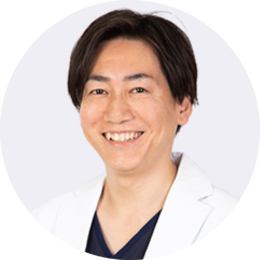
Thank you for visiting the website of Jeisys Medical Japan.
Laser treatment is effective in improving moles, scars, and age spots, and is employed by many clinics. However, lasers have a high thermal effect on the skin, which may cause longer postoperative downtime and side effects.
The Edge ONE CO2 gas laser offers a solution to such concerns. In this issue, Dr. Yoko Yoshioka, Director of Takanashi Clinic, will introduce cases with Edge ONE and the points of minimally invasive treatment.
- INDEX
Principles and features of Edge ONE (02:00~)

Edge ONE is a 10.6㎛ wavelength gas laser. It is gas-filled with carbon dioxide, nitrogen, or helium, and oscillates when excited or resonated by an electrical discharge.
Edge ONE’s wavelength is well-absorbed by water, a major human tissue constituent. The laser light reaches into deep layers, and the areas not transpired become a thermal coagulation layer, causing a hemostatic effect.
In addition, Edge ONE has high oscillation efficiency and short irradiation time, which reduces the impact on healthy skin.
Features of Edge One Surgical Mode (03:17~)
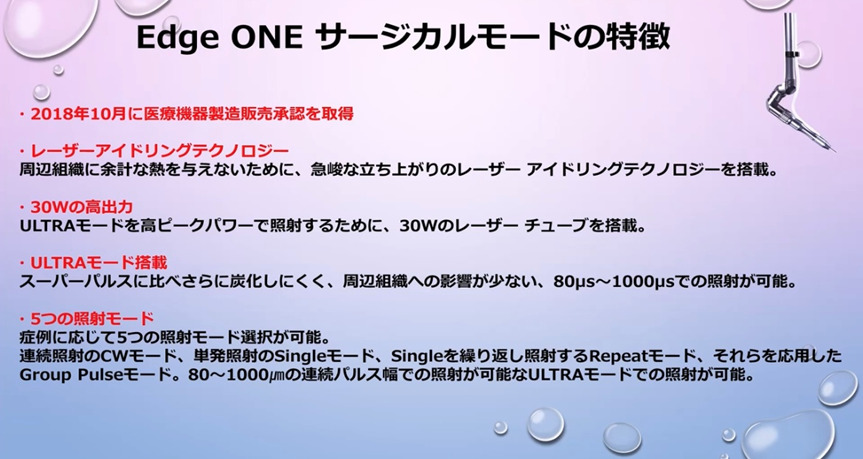
Edge ONE’s Surgical Mode has four features.
Laser Idling Technology
High power output of 30W
Equipped with ULTRA Mode
5 irradiation modes
Edge ONE is particularly outstanding because of its high output power of 30W and ULTRA Mode.
The two features reduce risk of hyperpigmentation and scarring, as well as shortening postoperative downtime.
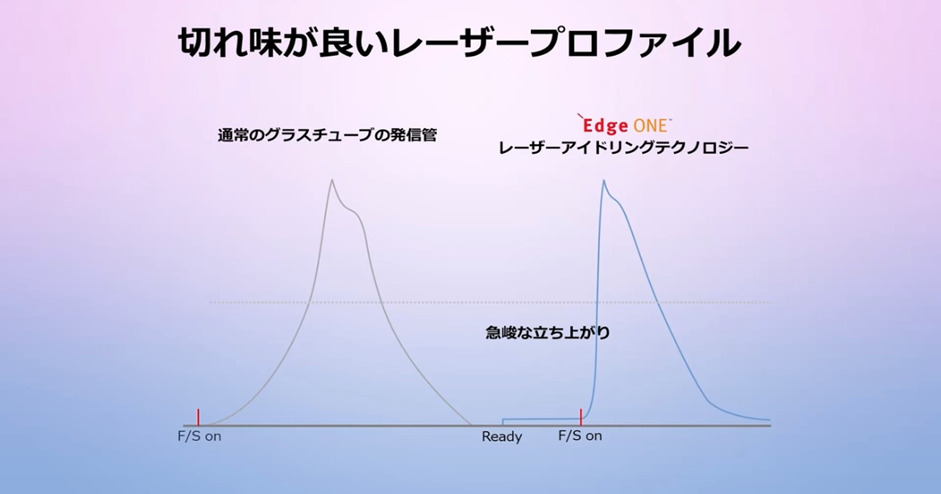
Laser Idling Technology has a fast start-up time to avoid giving excess heat to tissues other than the treated area. Laser sharpness and visibility are also excellent, allowing for detailed treatment.
Surgical Mode is equipped with five irradiation modes, making it possible to handle a variety of cases.
CW Mode performs electrocautery incisions and coagulation. A constant laser power is output while the switch is turned on. Its thermal damage is significant but highly hemostatic, allowing for sudden bleeding.
Ultra Mode, which requires less time per irradiation, minimizes the thermal damage to the surrounding tissues.
Due to less carbonization and better vision, it also reduces downtime when used for flat moles of 5 mm or less.
Actual treatment with Surgical Mode (05:23~)
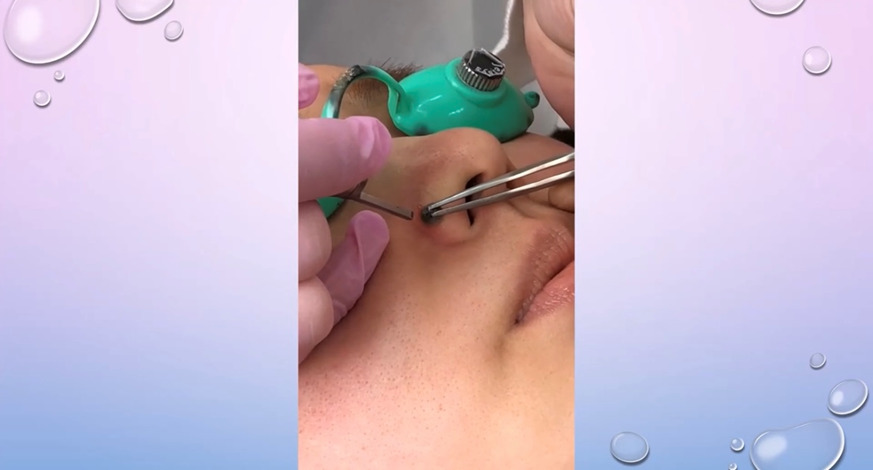
In using Incision and Transpiration Mode, Incision Mode is first used to ablate the raised areas. Next, the remaining pigment is removed with Transpiration Mode to improve skin tone.
When using Transpiration Mode, quick and untimed irradiation is important; heat concentrated on one point increases risks of thermal damage and necrosis.
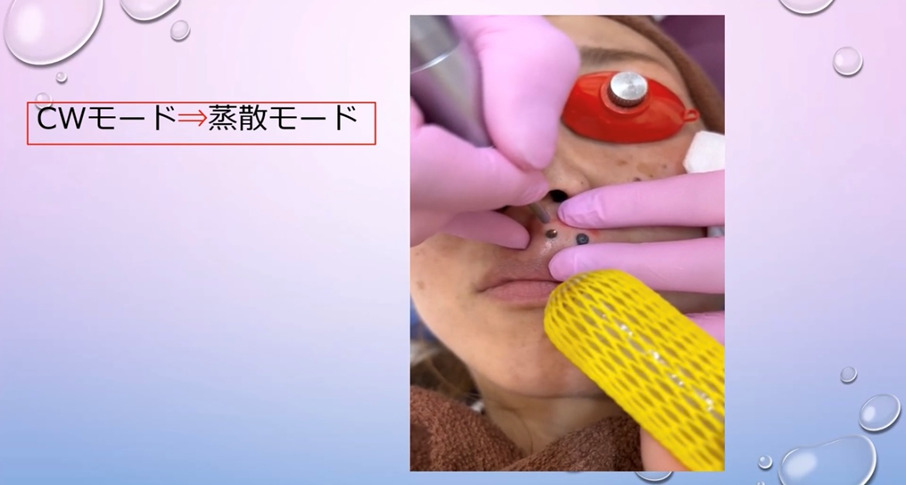
When using CW Mode and Transpiration Mode, first flatten the raised mole surface with CW Mode. Once the mole is flattened, quickly switch to Transpiration Mode to remove the remaining pigment. Remove about two sizes larger than the lesion to avoid scarring.
Theory and Features of Edge ONE Fractional Mode (16:29~)

Fractional Mode is an ablative fractional laser that combines transpiration and thermal coagulation. The micro-diameter spot irradiation ensures immediate wound contraction and epithelialization. Need several treatments, but can get transpiration, thermal coagulation, and denaturing effects with short downtime.
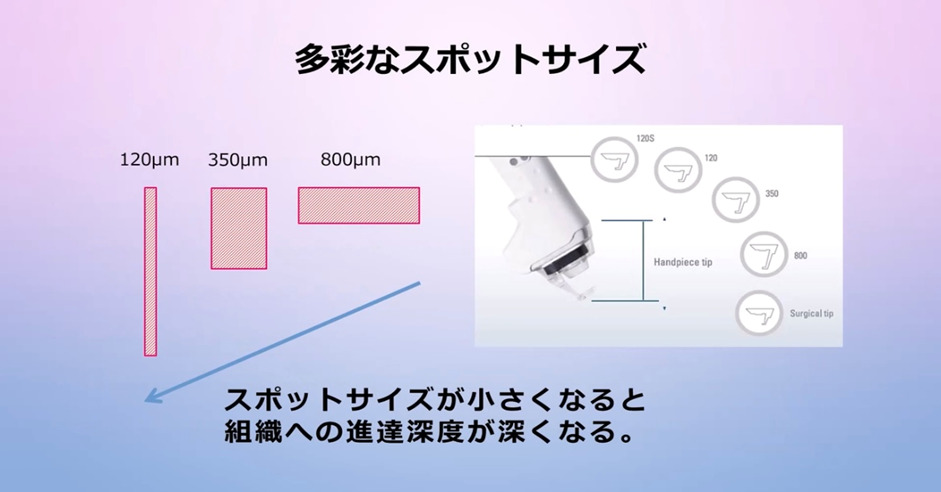
There are 3 different spot sizes, the depth of penetration into the tissue depending on the size.
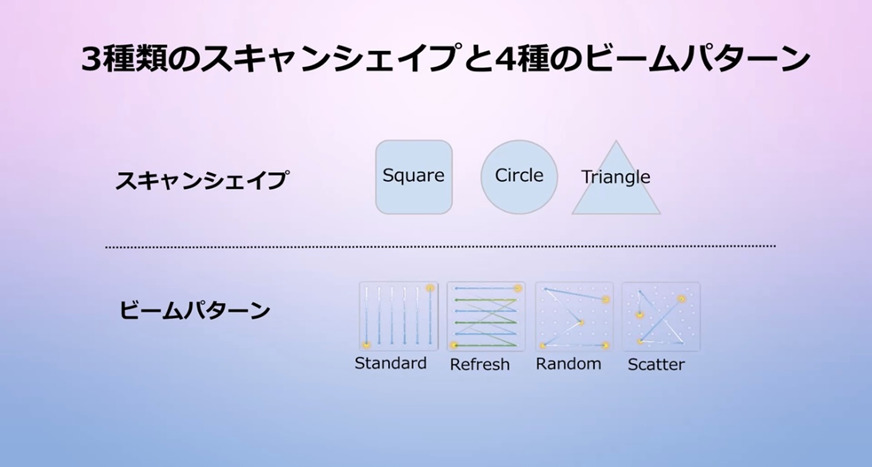
ScanShape can also be switched according to the area to be irradiated. Square is used for flat areas (e.g., cheeks) and Triangle for the nose, for example. There are 4 types of beam patterns: Standard is used for vertical irradiation, and Refresh is used to minimize post-irradiation dot marks.
Actual Treatment with Fractional Mode (17:36~)

2-pass irradiation is standard for Fractional Mode, but 1 pass is added for areas of particular improvement.

Mild redness and spots may occur right after irradiation, but will subside the next day. Makeup can be used the next day.
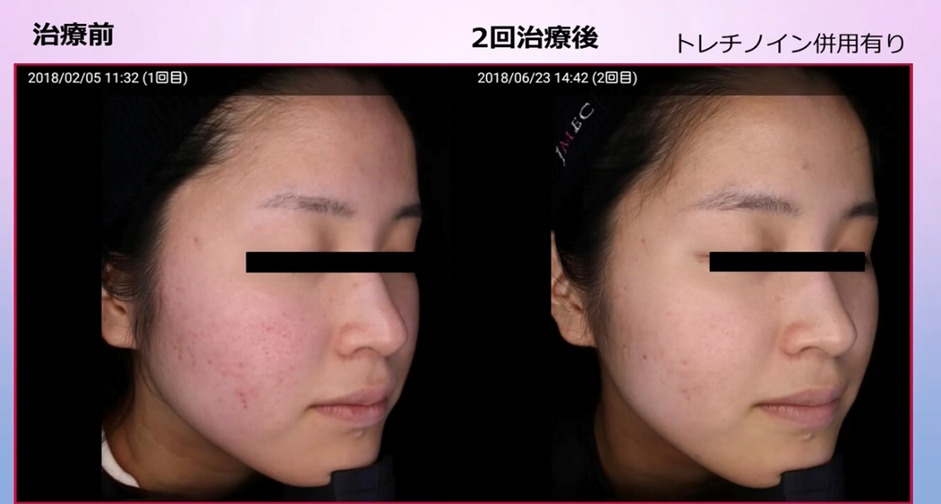
Irradiating acne scars improves redness and skin texture and prevents acne formation.
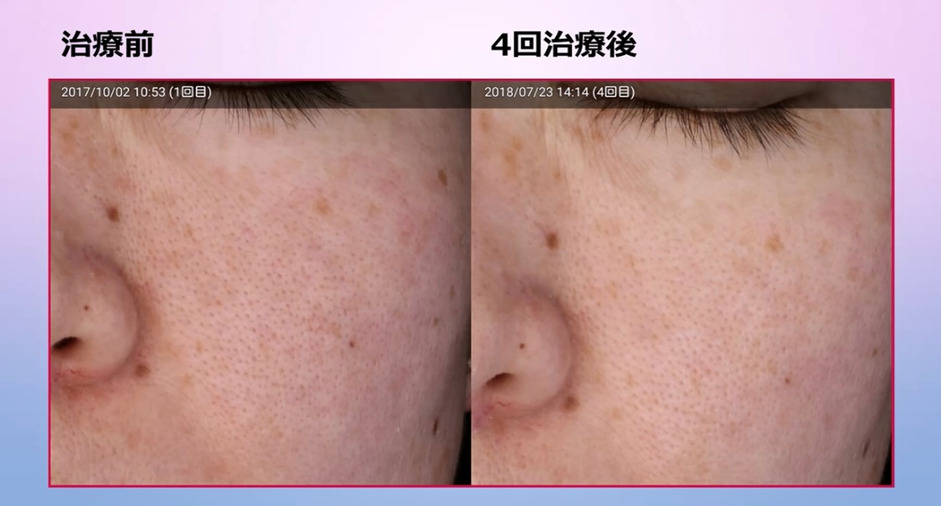
Also improves black pores and sagging skin.
When fractional laser is used as a scar treatment, the key is to irradiate only the lesion. Acne scars and scars have a fixed percentage of scar tissue within the skin tissue.
When fractional laser is applied to the entire area, the scar tissue ratio is not reduced because normal tissue is also irradiated. Therefore, scar treatment should irradiate only the lesioned area.
Please watch the video to see a wide variety of cases.

